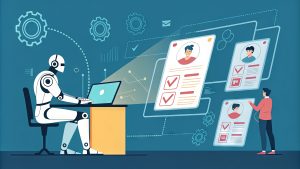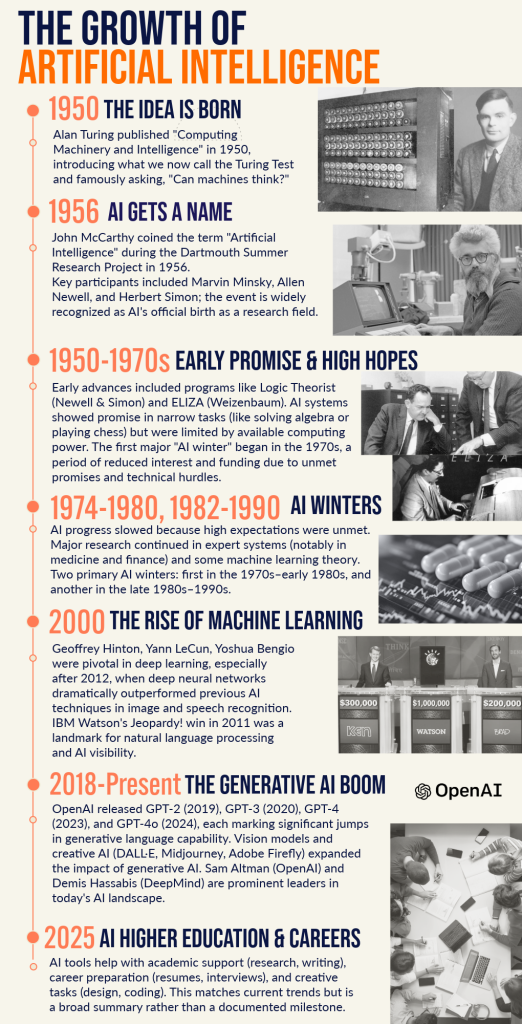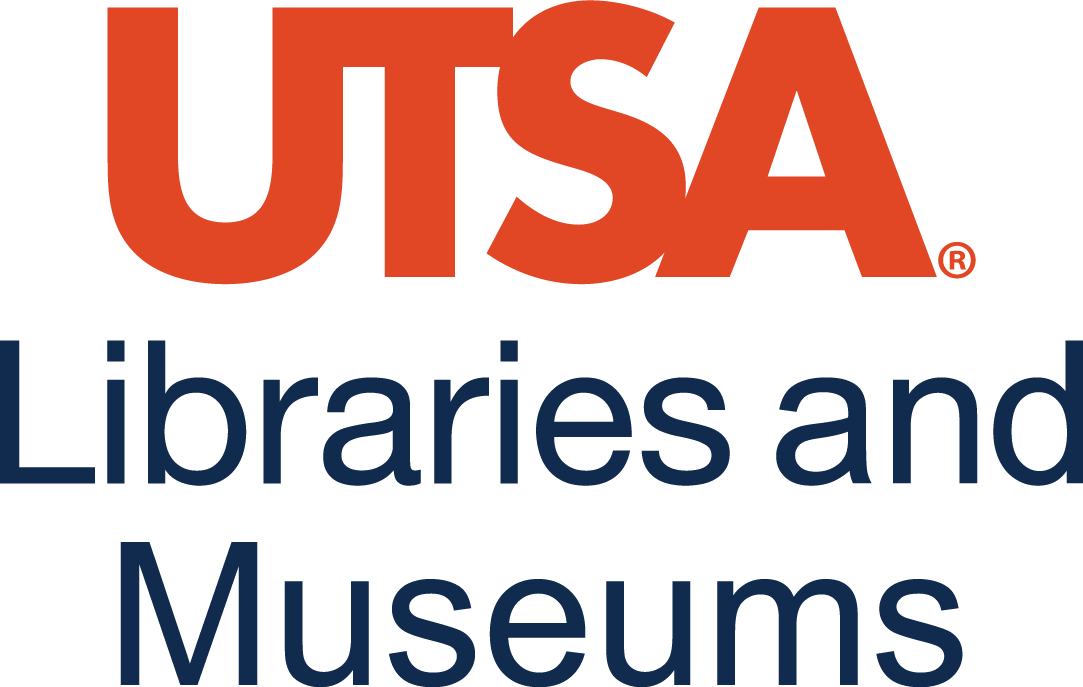Unit 1 | Generative AI and Its Relevance in Today’s World
Section 1.1: Overview of Generative AI
What is Generative AI, and Why Should You Care?

Imagine typing a few words into a box—and getting back a whole essay, a piece of music, an image, or even computer code. That’s generative AI, or GenAI for short. It’s a type of artificial intelligence that generates new content based on your input, also known as a “prompt.”
So why should you care?
The best part?
A Quick Journey Through the History of Artificial Intelligence
Knowing the past helps you shape the future. Understanding AI—from Turing to today—gives you the power to use it thoughtfully, creatively, and ethically in your academic and professional life.
1950s The Idea is Born
Alan Turing published “Computing Machinery and Intelligence” in 1950, introducing what we now call the Turing Test and famously asking, “Can machines think?”
1956: AI Gets a Name
John McCarthy coined the term “Artificial Intelligence” during the Dartmouth Summer Research Project in 1956. Key participants included Marvin Minsky, Allen Newell, and Herbert Simon; the event is widely recognized as AI’s official birth as a research field.
1950s-1970s: Early Promise and High Hopes
Early advances included programs like Logic Theorist (Newell & Simon) and ELIZA (Weizenbaum). AI systems showed promise in narrow tasks (like solving algebra or playing chess) but were limited by available computing power. The first major “AI winter” occurred in the 1970s, a period marked by reduced interest and funding due to unmet promises and technical hurdles.
1974–1980, late 1980s–1990s: AI Winters
AI progress slowed because high expectations were unmet. Major research continued in expert systems (notably in medicine and finance) and some machine learning theory. Two primary AI winters: first in the 1970s–early 1980s, and another in the late 1980s–1990s.
2000s: The Rise of Machine Learning
Geoffrey Hinton, Yann LeCun, Yoshua Bengio were pivotal in deep learning, especially after 2012, when deep neural networks dramatically outperformed previous AI techniques in image and speech recognition. IBM Watson’s Jeopardy! win in 2011 was a landmark for natural language processing and AI visibility.
2018–Present: The Generative AI Boom
OpenAI released GPT-2 (2019), GPT-3 (2020), GPT-4 (2023), and GPT-4o (2024), each marking significant jumps in generative language capability. Vision models and creative AI (DALL·E, Midjourney, Adobe Firefly) expanded the impact of generative AI. Sam Altman (OpenAI) and Demis Hassabis (DeepMind) are prominent leaders in today’s AI landscape.
2025: AI in Higher Education and Careers
AI tools help with academic support (research, writing), career preparation (resumes, interviews), and creative tasks (design, coding). This aligns with current trends, but it is a broad summary rather than a documented milestone.

“The Growth of Artificial Intelligence” infographic timeline by Alexia Pollock & Kelly Moore on Adobe Express is licensed under the Adobe Express license.
What’s Next?
- Human-AI collaboration, AI ethics and policy, and responsible use are widely recognized as future priorities.
- Emphasis on informed digital citizenship aligns with discussions in the field.
Pause & Reflect
 Quick Check-In (with yourself). Get comfy, sip your favorite drink, stretch your legs, or step outside for some fresh air. When you come back, check in with yourself to see what’s sticking and how you’re feeling about GenAI so far.
Quick Check-In (with yourself). Get comfy, sip your favorite drink, stretch your legs, or step outside for some fresh air. When you come back, check in with yourself to see what’s sticking and how you’re feeling about GenAI so far.

Ask Yourself
- What’s one thing I learned that surprised me?
- How comfortable do I feel about using GenAI in my academic life?
- Do I feel ready to try using a GenAI tool—or do I still have questions?
- What support might I need (info, guidance, reassurance) to use GenAI thoughtfully?
Write down a few thoughts in a notebook, voice memo, or wherever you like to reflect. No pressure. Just space to think.
Why does this matter?
Learning new things—especially about tech—can be exciting and overwhelming. Taking time to breathe and reflect is a powerful part of learning and protecting your well-being.
